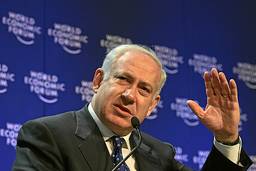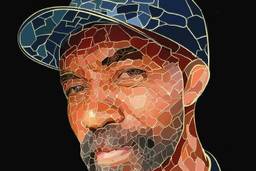The Genesis of Peoplehood
A review of Palestinian Identity: The Construction of Modern National Consciousness (Columbia University Press), by Rashid Khalidi.
Ralph Seliger
[Editor’s note: This article appeared in the magazine’s November 23, 1997 issue (Vol. 21, Nos. 25-26).]
As a scholar of Middle Eastern history at the University of Chicago and an American of distinguished Palestinian lineage who has advised PLO diplomats and officials, Rashid Khalidi combines a commitment to Palestinian interests with formidable analytic skills. In Palestinian Identity, he contributes to the overheated field of Palestinian-Israeli historiography by applying a refreshing perspective.
“National identity is constructed; it is not an essential, transcendent given, as the apostles of nationalism … claim,” he writes. It arises from people’s perception of shared experience and fate, i.e., a “national narrative.”
Khalidi outlines how the Palestinians have shifted in self-definition and sentiment depending on the era in which they lived. They were Arabs of Ottoman loyalty in the waning years of the Turkish Empire, and some developed a “South Syrian” identification for a few years following World War I. They have manifested competing pan-Arab, pan-Islamic, Jordanian and Palestinian nationalist orientations in more recent decades.
By reporting upon views presented in the Ottoman parliament of the late 19th and early 20th centuries by Palestinian- Arab representatives and in a content analysis of regional newspapers into the ’20s, Khalidi traces the early evolution of Palestinian consciousness. A number of his ancestors figure in this story.
Khalidi relates how the very concept of a Palestinian people had virtually disappeared from international discourse between the “Nakba,” the catastrophic defeat and dispersion of 1947-48, and the rise to prominence of the Palestine Liberation Organization (PLO) following the Six-Day War of June 1967. Although the PLO succeeded in refocusing world attention on their plight, Khalidi criticizes its clumsy maneuvering from defeat to defeat. Its “quixotic” celebration of “failure as triumph” disguised its defeat in every military effort: the Battle of al-Karama in 1968, the war with King Hussein hi 1970, and the years in southern Lebanon that ended with the 1982 Israeli invasion and exile in Tunisia.
By focusing only on development of Palestinian consciousness, Khalidi misses an opportunity to make a broader statement on the rights of all peoples to define themselves. Just as Jews have tended to cast “the Arabs” as an undifferentiated hostile mass, “the Zionists” are depicted here in mostly one-dimensional terms as an alien “other” and a sinister juggernaut that could not be reasoned with.
The truth is far more complex. The “Second Aliya” (the wave of Zionist immigration of the early years of the 20th century) began to transform the country through land purchases from mostly absentee and other Arab owners, Khalidi notes. With the assent and occasional assistance of Ottoman authorities, the tenant farmers were evicted. The plantations of the earlier (pre-Zionist) settlers, in being worked by hired Arab hands, resembled colonialist enterprises elsewhere in the Third World. But the Second Aliya constituted something different. Khalidi does not emphasize that these “colonialists” related to no mother country, exploited few native laborers and did not seize property but legally purchased it.
Still, these early transactions between Jews and Arabs produced a poisonous fallout that formed a tragic model for future relations. Khalidi indicates that displaced tenant farmers violently resisted the new owners. The settlers created a Zionist militia called Hashomer (literally, “the Guard”), a forerunner to the famous underground army Haganah, to counter these attacks. Despite the symbolic victory of securing Britain’s Balfour Declaration in 1917, which proclaimed that Palestine should become a Jewish “national home,” the Zionists did not long remain “proteges” of the British as Khalidi contends.
The Arab Rebellion of 1936-39 was a military disaster for the Palestinians, as Khalidi tells it, but it was also a political success. It influenced the British to issue the “White Paper” of 1939, sharply curtailing immigration to Palestine at precisely the point when Europe was turning into a massive slaughterhouse for its Jews.
This so enraged the Stern gang, the ultra-nationalist underground led by Yitzhak Shamir, that it launched armed attacks on the British even when they constituted Palestine’s sole shield against Rommel’s advancing Afrika Corps. The Stern gang’s rival on the underground Zionist right, the Irgun led by Menachem Begin, joined the attack after World War II. British officers returned the favor by training and commanding the invading troops of Transjordan and Iraq in 1948, and advising those of Egypt. The Soviet Union, the only major power to aid Israel materially in 1948, did so to strike a blow against British dominance in the Middle East.
The victory of the Zionist “juggernaut” in the 1947-48 war was less certain and more closely fought than Khalidi would have us believe. It cost the Jewish community 1 percent of its total population of 600,000, plus 15,000 wounded. It also witnessed Israel’s defeat in every major engagement with Transjordan’s Arab Legion, leaving the Old City of Jerusalem and the Etzion Bloc entirely in Arab hands.
It is just possible that if 3,000 to 5,000 Palestinians had not been killed in the Arab revolt, including, as Khalidi states, “the loss of hundreds of the bravest and most enterprising military cadres killed in battle or executed by the British,” that the war might have ended differently. Would victory by the Palestinians’ most powerful leader, Hajj Amin al-Husseini, the pro-Nazi Grand Mufti of Jerusalem, have meant a more humane result? Khalidi does not examine the significance of a community subject to such a leadership.
When Khalidi contrasts Palestinian divisiveness in their ’40s struggle with the “politically unified” Zionist movement, he ignores the rise of an alternative Zionist movement under the right-wing “Revisionist” banner of Ze’ev Jabotinsky (the ideological forbearer of Begin, Shamir and Benjamin Netanyahu). Begin’s Irgun actually suffered 14 killed at the hands of mainstream Israeli troops commanded by a young officer named Yitzhak Rabin when the former refused to turn over a shipload of arms to the newly formed national army. In 1948, these “unified” Zionists came within a hairsbreadth of civil war.
Likewise, there is no discussion of the Zionist left: Hashomer Hatzair advocated binationalism and opposed the concept of a Jewish state. The group that became Achdut Ha’Avoda advocated a federated state with Palestinian Arabs. Both were militantly socialist and pro- Soviet, and critical to varying degrees of the Zionist “Conquest of Labor” campaign castigated by Khalidi.
But the total condemnation of either party is not appropriate. Both sides reacted understandably in defense of their interests. Khalidi acknowledges that the Zionists were motivated from the very beginning by the need to flee anti-Semitism – virulently expressed early this century in pogroms of the Czarist regime and the ensuing Russian civil war, and later with the rise of Hitler. But Khalidi does not pronounce what the Zionist left and peace camps have long articulated: that the Palestinian- Israeli conflict is a clash between two peoples defending the identical right to live with security and dignity.
Exactly two years ago, just prior to Yitzhak Rabin’s assassination, Yossi Beilin (a close associate of Shimon Peres and a major architect of the Oslo Accords) successfully concluded a broad outline for peace with Mahmoud Abbas, a key aide to Yasser Arafat. Then, in quick succession, an assassin struck, Israel withdrew from most population centers on the West Bank, Palestinians held their first-ever national elections, Israeli elections were called and fanatic suicide bombers blew to bits their people’s best opportunity for sovereignty and territorial contiguity.
Khalidi’s critique of the Oslo process in In These Times (“A Flawed Peace,” June 30) makes no reference to the Beilin-Abbas talks and how close Oslo came to success. In both the article and the book, he fails to emphasize – even now when it’s so burningly obvious – that not all Zionists are alike.








